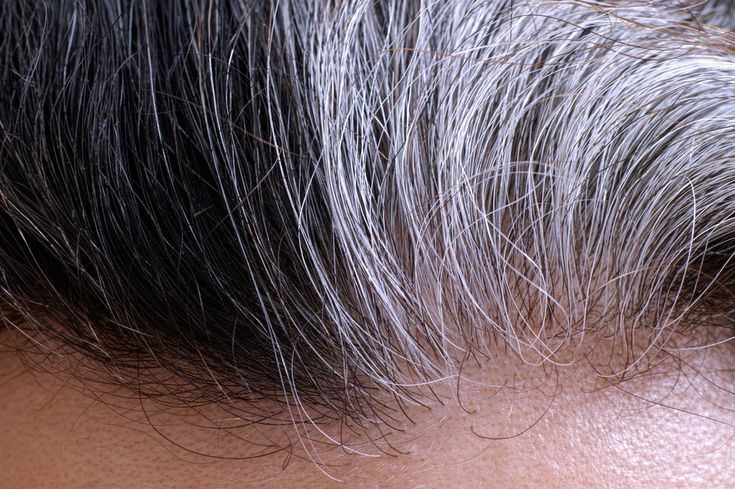Grayed people, time is passing for everyone! But from today it could go back and at least give you back your hair color. UAB research explores ways to “rejuvenate” gray hair.
The search for Melissa harris indicates a new paradigm for identifying and reversing the process that makes hair grey. “It was thought that once the hair turned grey, all the stem cells were lost. With no way back,” he said Harris, “but presumably they can be reactivated.”
Molecular biology is not the kind of science you can do with the naked eye.

Melissa Harris, Ph.D., runs a lab that relies on CRISPR gene editing tools, single cell sequencing studies, and analysis algorithms. But all she needs is a glance to diagnose the state of the melanocyte stem cells, and evaluate their effect on gray hair.
This is the beauty of gray hair as a pattern for aging: if your hair is all one color, the stem cells for your hair are fine. Wherever there is gray hair mixed, however, something has gone wrong.
You are getting older? It's a possibility. Is this an inevitable thing in the aging process? It is no longer so. It is no longer said.
Harris, who is also an assistant professor in the Department of Biology, has spent the last decade uncovering the relationship between stem cells and baldness. Above all, however, he looked for evidence that age is not the only reason why melanocyte stem cells fail.
He is now focusing his research with mice on a new task: to demonstrate that there may be a way to bring those cells (and their original colored pigments) back from the dead.
Harris' lab is working with a biotechnology startup to study an experimental compound that appears to restore long-term hair color in mice.
Why does the hair turn gray?
Hair color comes from melanocyte stem cells, which live near the root of each of the approximately 150.000 bulbs we have on our heads. (That is, if you have an average amount of hair, otherwise the search for you is this one).
Each hair survives approximately seven years. When it falls, a new one begins to grow in its place. This is the signal for some of the stem cells waiting for the melanocytes that wake up, transform (differentiate) into melanocyte cells that produce pigments and migrate to the hair root, where they inject pigment into the hair shaft as new hair grow.
The researchers suspected that, with age, the melanocyte stem cells would all differentiate into melanocytes, or otherwise disappear, leaving no stem cells as a reserve to form a new group of melanocytes.
Melissa Harris has been working on the problem for the past ten years and has discovered a much more complex picture.
She and her lab team identified several causes of graying hair, and encouraging evidence that melanocyte stem cells can also survive when hair turns gray. They may be in a state of deep sleep and the right signal may wake them up.
Goodbye tinctures, but not only
Recoloring her hair isn't Harris' end goal. His work has applications on many pigmentary disorders such as vitiligo or even melanoma, which is cancer of the melanocyte cells.
The ultimate goal is to understand why somatic stem cells (which are found in muscles, bones and organs throughout the body and are crucial. For tissue regeneration, immune defense, wound healing and EVEN skin color hair) sags as we age.
“To treat or prevent aging, we need to be more specific, we will need personalized therapies based on individual genetic or molecular factors,” said the scientist. To do this it will be important to understand the mechanisms that interrupt the life cycles of stem cells.
Most of these stem cells are notoriously difficult to work in the laboratory: it is not easy to manipulate their genes without catastrophic results. But melanocyte stem cells are an exception.
Science of vanity
“Everyone has gray hair,” said Harris. But research on this topic has a bad reputation “It is considered the science of vanity”, He says. As you like to point out during your speeches, however, “I'm not a vain person. My laboratory has chosen the most appropriate model to investigate what happens to stem cells as we age.”
The work earned her a prestigious K99/R00 Pathway to Independence grant from the NIH's National Institute of Aging, and some fame in the field of aging research. Colleagues call her “the gray-haired lady”.
Gray hair? I am in your destiny
Graying of hair is inevitable. “Between the ages of 61 and 65, 91% of people have some level of graying of their hair”Says Melissa harris. But some people have far less gray hair than others, he continued. Because? One of the factors we know how to contribute is the genetic background.
A 2012 study in France indicated the presence of gray hair in people between the ages of 45 and 62 of different origins. “Continental” French people were the highest likely to be gray in that age group: 93%. At the opposite end of the scale were French people of sub-Saharan origin; only 43% of them had gray hair. As these numbers suggest, there is significant variability: what changed in the 7% of “continental” ones, or the 57% of “sub-Saharan” ones who still had their original hair color?
All it could take is an infection
“Perhaps, in an individual who is healthy but predisposed to gray hair a simple daily viral infection is enough to cause the decline of melanocytes, leading to premature gray hair,” Harris says. It is not a mechanism yet studied in depth in humans, but it would explain several cases.
“Colorful” regrowth, a compound that amazes
Last year, Harris received a contact from a small biotech startup. They had an experimental compound in development to regrow hair, and it also seemed to affect pigmentation. The company wanted to understand more about the mechanism, and asked Harris to test the compound in the laboratory.
“I was skeptical,” said Harris. “But I agreed to do some research. And it seems fantastic to me. When I gave the mice the compound, I saw repigmentation of the hair. Mice lose their hair, the hair grows back and maintains the highest level of pigmentation, suggesting that the process is permanent.".
This compound is reprogramming the stem cells, bringing them to a younger state, allowing them to start over.
Harris and one of his graduate students, Joseph palmer, suspect that melanocyte stem cells may be affected by a phenomenon called the “quiescence program.” Melanocyte stem cells, for example, are only called into play every seven years or so, when a new hair grows. They spend the rest of their time in a form of hibernation, and perhaps as they age it simply becomes more difficult to wake them up.
The Quiescence
Quiescence helps preserve stem cells during life by reducing their metabolic rate and proliferative activity. It has been detected in muscle stem cells, hematopoietic stem cells, hair follicle, neural stem cells and intestinal stem cells. It is not something that pertains to the treatments for baldness and androgenetic alopecia of 2011 or 2013, but a 2019 German research published in the journal Trends in Cell Biology.
PD-L1 protein and its role in gray hair
Spanish doctors wrote in the journal JAMA Dermatology to have noticed a strange side effect in more than a dozen patients undergoing immunotherapy for lung cancer: hair repigmentation. PD-L1 is a protein that suppresses the immune system: blocking it allows a vigorous immune response against cancer cells.
Harris' lab examined the quiescent stem cells of the melanocytes and found that expressed more PD-L1 proteins than actively dividing cells. “And as you progress into quiescence, the cells express more PD-L1 and are harder to reactivate. We need to give them a good wake-up call,” says Harris.
Research has convinced the scientist that a new paradigm is at stake.
The canonical path (progressive loss of melanocyte stem cells and graying of hair) gives way to a new paradigm of "sleep" of melanocyte stem cells, which causes hair to grey. This suggests that we can find therapies to reactivate them. The compound being studied could be a very, very promising path.
“We have an opportunity to find out what are the potential ways we can fix a broken system,” Harris said. “We are always looking for what is broken, we rarely go in the opposite direction, towards tissue rejuvenation. This is why it is a study that excites me. “


